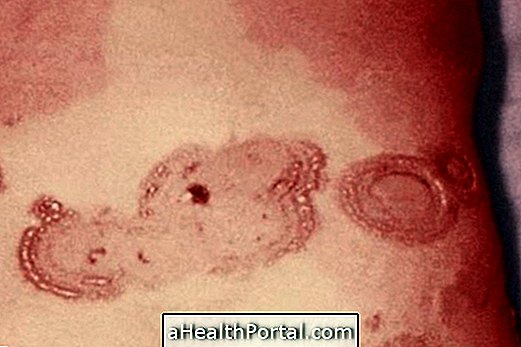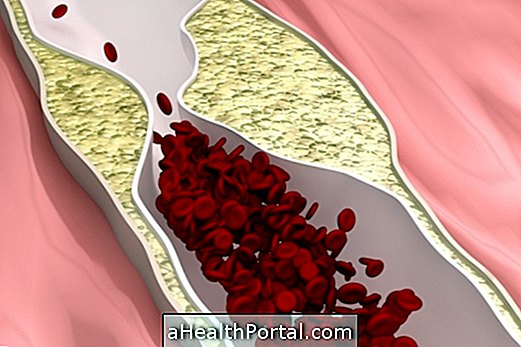Cholesteatoma corresponds to the abnormal growth of skin inside the ear canal, behind the eardrum, which can be identified through the discharge of strong ear odor secretion, tinnitus and changes in hearing ability, for example. According to the cause, cholesteatoma can be classified into:
- Acquired, which may occur due to perforation or invagination of the tympanic membrane or due to repeated or untreated ear infections;
- Congenital, in which the person is already born with excess skin in the ear canal, however the reason why this happens is still unknown.
Cholesteatoma has the appearance of a cyst, but it is not a cancer. However, if you grow too large you may need surgery to remove it to prevent more serious damage such as destruction of the middle ear bones, changes in hearing, balance, and function of the facial muscles.

What are the symptoms
Usually the symptoms associated with the presence of a cholesteatoma are mild, unless it grows excessively and begins to cause more serious problems in the ear, with the main symptoms observed:
- Release of ear secretion with strong odor;
- Sensation of pressure in the ear;
- Discomfort and earache;
- Decreased hearing capacity;
- Buzz;
- Vertigo.
In more severe cases, there may still be perforation of the eardrum, damage to the bones of the ear and brain, damage to the brain nerves, meningitis and formation of abscesses in the brain, which can put one's life at risk. Therefore, as soon as any symptoms related to cholesteatoma are noticed, it is important to consult the otorhinolaryngologist or general practitioner to avoid the development of cholesteatoma.
In addition to the symptoms already mentioned, this abnormal growth of cells inside the ear creates an environment conducive to the development of bacteria and fungi, which can cause infections in the ear, also arising inflammation and release of secretion. See other causes of ear discharge.
Possible causes
Cholesteatoma is usually caused by repeated infections of the ear or by changes in the functioning of the auditory tube, which is a channel that connects the middle ear to the pharynx and helps maintain the balance of air pressure between the two sides of the eardrum. These changes in the auditory tube may be caused by chronic ear infections, nasal sinus infections, colds or allergies.
In rare cases, cholesteatoma can develop in the baby during gestation and is then called a congenital cholesteatoma, where there may be tissue growth in the middle ear or other regions of the ear.

How is the treatment done?
Treatment for cholesteatoma is done by surgery, in which excess tissue is removed from the ear. Prior to the surgical procedure, antibiotics, drops or ear application and careful cleaning may be necessary to treat a possible infection and reduce inflammation.
Surgery is done under general anesthesia and if the cholesteatoma has not caused serious complications, recovery is usually rapid, and the person can go home soon after. In more severe cases, it may be necessary to stay longer in the hospital and have rectal surgeries to repair cholesteatoma damage.
In addition, one should also periodically evaluate the cholesteatoma to confirm that the removal was complete and that the cholesteatoma does not grow again.
























